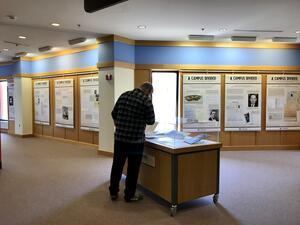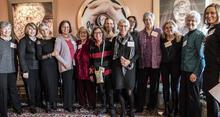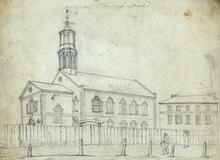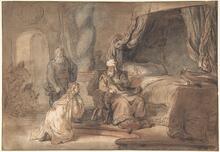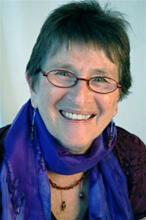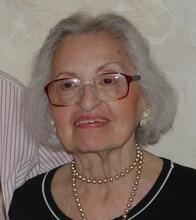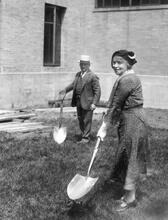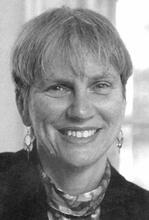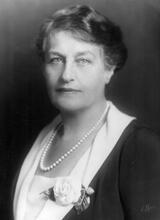Riv-Ellen Prell
As a cultural anthropologist, Riv-Ellen Prell dramatically altered contemporary understanding of American Jews. Beginning with her first book, Prayer and Community, and extending to Fighting to Become Americans, her work consistently centered gender, whether she was exploring an intimate minyan or examining representations of Jews across the twentieth century. Prell grounded her attention to stereotypes in her understanding of the demands of capitalism and power relationships in American society. She built her career at the University of Minnesota, helping to establish Jewish studies there. As a leader in the academy, she brought unpleasant truths to light, as evidenced in her powerful 2017 exhibit on “A Campus Divided: Progressives, Anticommunists, Racism and Antisemitism at the University of Minnesota 1930-1942.”
Prayer and Community. Anxiety of Assimilation. Gender. Racism. Antisemitism. Authenticity. Boundaries. Margins and Norms. Fear and Loathing. Triumph, Accommodation and Resistance. Community and the Discourse of Elegy. Feminism and the Remaking of American Judaism. Postwar American Youth and the Redemption of Judaism. As these words drawn from titles of her many articles and books suggest, Riv-Ellen Prell has tackled the most difficult issues facing contemporary American Jews.
Family and Education
Both Prell’s father, Samuel Prell (1911-2001), born in St. Louis, and her mother, Miriam (anglicized to Mary) Devorah Schwartz (1912-1989), born in Montreal, grew up in Los Angeles., part of a small Jewish community. The children of immigrants, they married in 1934 amid the Great Depression. Mary Prell became a United States citizen upon marriage. They had their first child, Joel, in 1944. On October 15, 1947, Riv-Ellen Prell was born. Named for her two deceased grandmothers, she was the youngest member in her large, extended family.
The family lived in a middle-class Los Angeles neighborhood, where her home and much of her street were destroyed to create the Santa Monica Freeway in the early 1960s. They moved to Beverlywood in West L.A., where Prell entered Alexander Hamilton High School. Both neighborhood and school were nominally integrated but racial segregation within the school through tracking kept black and white students apart. For Prell, high school was a time of innocence, enthusiasm, idealism, and politics; she recalled it as an “earnest committed time.”
At the University of Southern California, Prell blossomed as a superb student of religion and anthropology, graduating Phi Beta Kappa in 1969. She studied with two formative Jewish anthropologists: Sally Falk Moore and Barbara Myerhoff. Both became major figures in anthropology and provided important female role models for Prell, a young woman with academic aspirations. There she also met her future husband, Steven Spencer Foldes, a Hungarian immigrant son of Holocaust survivors and a fellow anthropology student. They married in 1970. Marriage brought Prell into the fraught world of Holocaust survivors. Her husband’s parents had survived the war in Hungary and its trauma seared their lives. Her first daughter, Lila Sima Foldes, was born in 1979, followed five years later by her second daughter, Livia Sara Foldes.
Prell trained at the University of Chicago (PhD 1978) in anthropology. She entered the field during the heyday of symbolic anthropology, with its focus on how people negotiate and transform their worlds through rituals and cultural performances, often tied to economic and power relationships. She became interested in studying the United States, especially Jews there, and joined a postwar cadre that pioneered research on ordinary Jews, not those visibly different Jews, like Hasidim, who seemed to eschew modernity. Rather than head off to an exotic distant site for her ethnographic field work, she returned home to Los Angeles to try to understand the quotidian and sacred world of Jewish baby boomers. As she would later write, “This was no colonial encounter” (Acknowledgements, Prayer and Community).
Prell’s choice to study one of the many alternative forms of religious community created by Jewish baby boomers stemmed in part from her own experiences attending services with her father at Temple Isaiah, a liberal Reform synagogue in Los Angeles. He wore a Four-cornered prayer shawl with fringes (zizit) at each corner.tallit, something no one did since Reform Judaism had eliminated that ritual garment, and he offered his daughter a running commentary on changes from traditional liturgy. “You’re supposed to stand in this part,” he would mutter, “you’re supposed to repeat this.” In her introduction to Prayer and Community, her first book based on her dissertation, Prell credited her father’s “profound ambivalence about Judaism, his deep attraction to it, and his impatience with its laws and requirements that disrupted his” dry-cleaning business, as stimulating her “enthusiastic interest” in religion “that drew me to study anthropology” (Introduction, Prayer and Community).
Early Academic Career
Prell began to teach even before she completed her Ph.D., first briefly at her alma mater. In 1975 she obtained a tenure-track position in the Department of Anthropology at the University of Minnesota. Prell made her career there, especially in American Studies after her first book, Prayer and Community: The Havurah in American Judaism, appeared in 1989. For several years she led the Department of Women Studies and then the Center for Jewish Studies.
Prayer and Community signaled Prell’s deep engagement with American Jewish culture. It limned an in-depth portrait of American Jewish religious creativity based on eighteen months of field work. Prell takes the reader into the Jewish counterculture, focusing on how a younger generation, who had rejected their parents’ religion, worked to transform Judaism and make it their own. The first book to offer a scholarly study of a new form of Jewish community, Prayer and Community explores how Jews navigated political and cultural changes, including feminism, through traditional Jewish rituals and communal relationships. Prayer and Community won a National Jewish Book Award and launched Prell into her extraordinary career as a scholar of American Jewish Studies.
Also in 1989, Prell co-edited a volume with the Personal Narratives Group, a feminist collective at the University of Minnesota of which she was a member. Prell’s own joint teaching and a research project with other female faculty and graduate students made crucial connections that stimulated the creation of this interdisciplinary group in 1984. Interpreting Women’s Lives: Feminist Theory and Personal Narratives insists on seeing women as normative in society along with men. The volume remains a touchstone of both feminist theory and scholarship on the many forms of narratives that scholars, writers, and autobiographers collect and analyze. It demonstrated that lives do not, in fact, speak for themselves. Rather, they must be interpreted with a keen eye focused on how, where, and when those life stories are created. The American Education Studies Association gave it their Critics Choice Award.
Feminist Scholarship and Reshaping American Jewish History
Inspired by the important work of Paula Hyman on gender and “the project of assimilation” for European Jews and Michelle Wallace’s Black Macho and the Myth of the Superwoman for African Americans, Prell turned to Jewish gender representations. She sought to unravel a persistent hostility expressed in stereotypes that Jewish men and women rained down upon one another. Her book Fighting to Become Americans: Jews, Gender, and the Anxiety of Assimilation (1999) rewrote the history of American Jews by placing gender at its center. As Jewish immigrants struggled to enter the new society with its gender roles, they fought over conflicting demands of how to acculturate and attain middle-class status. Rather than focusing on capitalism or white Protestant culture as the cause of their difficulties, they turned instead on one another. Their struggles registered in representations that Prell traced all the way back to the turn of the twentieth century in the “Ghetto Girl” and forward in the postwar decades to the Jewish American Princess (JAP). Jewish men navigated the gendered requisites of American society by holding Jewish women responsible in those very images for the impossible burdens of American success. Her work drew on a wide range of sources, from the Jewish press, to film, popular novels, greeting cards, and art, which helped to establish approaches defining the emerging field of American Jewish Studies.
Prell’s second edited collection, Women Remaking American Judaism (2007), assessed the transformational impact of feminism on Jewish practices and Judaism. Her introduction framed how Second Wave Feminism produced far more transnational and radical changes in Jewish life than earlier efforts to integrate women into Judaism beginning in the nineteenth century. Late twentieth-century Jewish feminism questioned, and often reshaped, foundational texts and normative Jewish traditions. It succeeded, across most denominations, in winning for women places in the rabbinate and cantorate, traditional study halls, and leadership of new visions for Jewish spirituality.
Attuned to the role of consumption in American society and how it shaped men’s and women’s expectations, Prell explored an underlying theme in the American Jewish past, namely, the pervasive presence of anxiety. Rather than telling a neat story of social mobility, Prell complicated American Jews’ triumphs by discussing their enduring insecurities. Yet even as she paid attention to elegiac discourses running through Jewish communal life or the pervasive presence of antisemitism and the corroding racism of American society, she never lost track of gender and its formative power to construct identities. In 2019, she published “The Economic Turn in American Jewish History: When Women (Mostly) Disappeared,” as the centerpiece of a forum on economy and American Jewish history. There she called out American Jewish historians’ erasure of women and gender from their new focus on economic history.
Public History and the Crisis of Naming in Higher Education
In 2017, Prell mounted an extraordinary exhibit exposing antisemitism, racism, and anticommunism at the University of Minnesota during the Great Depression. “A Campus Divided: Progressives, Anticommunists, Racism and Antisemitism at the University of Minnesota 1930-1942,” the best-attended exhibit in the history of the Libraries of the University of Minnesota, drew national press coverage. The exhibit launched a movement, led by students, to rename buildings named after University administrators who supported racial segregation of taxpayer funded on-campus student residences and the exclusion of Jews and students of color from near-campus boarding houses. It also called for renaming a building named for a Dean of Student Affairs who spied on student progressives and sent this information to an antisemitic Republican operative. Both men sent these students’ names to the FBI and identified which were Jewish. The exhibit resulted in the appointment of a Presidential and Provostal Committee on the History of the University of Minnesota, which debated whether buildings named for University leaders exposed in the exhibit should be changed. The exhibit thus uncovered a sordid, but not atypical, history of repression, exclusion, and racism by the university’s top leadership.
Prell created a digital website of the exhibition with her daughter Livia Foldes, a graphic designer. The digital version has attracted tens of thousands of viewers from around the globe. This exhibit articulates Prell’s ongoing commitment to exploring how higher education, public or private, worked in collaboration with powerful elites to exclude Jews and African Americans, to differing degrees, from access to education and economic opportunities throughout the inter-war period and beyond.
Recognition and Leadership
In the twenty-first century, Prell received significant accolades for her scholarship, teaching, and leadership at the University of Minnesota, as well as in a wide array of other institutional and editorial venues. In 2002 she was awarded Scholar of the College for her distinguished scholarship; in 2007 the Graduate School recognized the impact of her scholarship in advancing the public good with appointment to the Fesler-Lampert Chair in Public Humanities. Four years later she received the Marshall Sklare Memorial Award of the Association for the Social Scientific Study of Jewry for distinguished achievement, followed by the President’s Award for Outstanding Service from the University, and then the Lee Max Friedman Award for distinguished service to the American Jewish Historical Society. Prell chaired the Academic Council of the American Jewish Historical Society and served on the editorial board of its journal, American Jewish History. She took similar leadership positions in the Association for Jewish Studies and the Association for the Social Scientific Study of Jewry.
Selected Works by Riv-Ellen Prell
“A Serious Man in Situ: ‘Fear and Loathing in St. Louis Park.’” AJS Review: The Journal of the Association for Jewish Studies. 35:2 (December 2011): 365-376.
“Boundaries, Margins, and Norms: The Intellectual Stakes in the Study of American Jewish Culture(s).” The Sklare Lecture. Contemporary Jewry 32 (July 2012): 189-204.
"Communities of Choice and Memory: Conservative Synagogues in the Late Twentieth Century." In Jews in the Center: Conservative Synagogues and their Members, edited by Jack A. Wertheimer, 269-358. New Brunswick, NJ: Rutgers University Press, 2000.
“Community and the Discourse of Elegy: The Post War Suburban Debate.” In Imagining the American Jewish Community, edited by Jack A. Wertheimer, 67-90. Hanover, NH: University Press of New England, 2007.
”Developmental Judaism: Challenging the Study of American Jewish Identity in the Social Sciences.” Contemporary Jewry 21 (Spring 2001): 33-54.
“The Economic Turn in American Jewish History: When Women (Mostly) Disappeared.” American Jewish History. 103: 4 (October 2019): 483-510.
Fighting to Become Americans: Jews, Gender, and the Anxiety of Assimilation. Boston: Beacon Press, 1999.
Interpreting Women's Lives: Theories of Personal Narratives. Co-editor with Personal Narratives Group. Bloomington: Indiana University Press, 1989.
Prayer and Community: The Havurah in American Judaism. Detroit: Wayne State University Press, 1989.
“Triumph, Accommodation, and Resistance: American Jewish Life from the End of World War II to the Six Day War.” In The Columbia History of the Jewish People in America, edited by Marc Lee Raphael, 114-141. New York: Columbia University Press, 2008.


 "Why Jewish American Princesses Don't Sweat: Desire and Consumption in Postwar American Jewish Culture." In The People of the Body: Jews and Judaism from an Embodied Perspective, edited by Howard Eilberg-Schwartz, 260-329. New York: SUNY Press, 1992.
"Why Jewish American Princesses Don't Sweat: Desire and Consumption in Postwar American Jewish Culture." In The People of the Body: Jews and Judaism from an Embodied Perspective, edited by Howard Eilberg-Schwartz, 260-329. New York: SUNY Press, 1992.
Women Remaking American Judaism. Detroit: Wayne State University Press, 2007.


